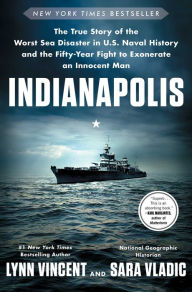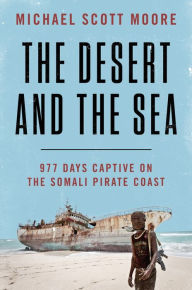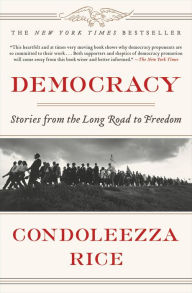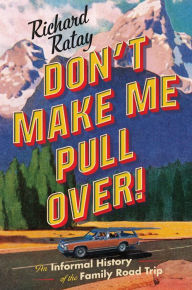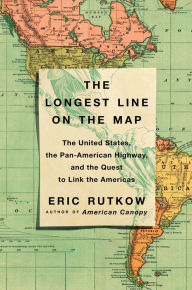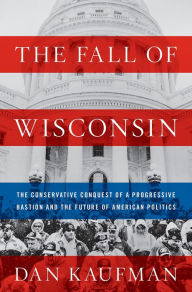July’s Best History Books
There’s no better time to contemplate how the past shapes the present (and the future) than the month we celebrate the birth of our nation. This month, we have a potent list of new history books that help you see the bigger picture, including an investigation into one of the biggest naval disasters ever, the inspiring story of a man held captive by Somali pirates, and the heroic story of Jews who escaped Hitler’s Germany only to volunteer to take up arms and go back to fight the Nazis.
Indianapolis: The True Story of the Worst Sea Disaster in U.S. Naval History and the Fifty-Year Fight to Exonerate an Innocent Man
Indianapolis: The True Story of the Worst Sea Disaster in U.S. Naval History and the Fifty-Year Fight to Exonerate an Innocent Man
By Lynn Vincent , Sara Vladic
Hardcover $28.00
Indianapolis: The True Story of the Worst Sea Disaster in U.S. Naval History and the Fifty-Year Fight to Exonerate an Innocent Man, by Lynn Vincent and Sara Vladic
In 1945, the USS Indianapolis was torpedoed and sunk by a Japanese submarine. Nearly 900 of the crew survived the sinking—but 600 of them died over the next four days as they floated helplessly in the water. Vladic and Vincent expose the Navy’s incompetence and the effort to cover up the disaster by blaming the ship’s captain, who was court-martialed in a suspiciously quick and secretive action—and who later killed himself. Captain Charles McVay III was eventually proved to be innocent of the charges, but the truth of the Navy’s mistakes and their horrific results have remained largely unknown, until now.
Indianapolis: The True Story of the Worst Sea Disaster in U.S. Naval History and the Fifty-Year Fight to Exonerate an Innocent Man, by Lynn Vincent and Sara Vladic
In 1945, the USS Indianapolis was torpedoed and sunk by a Japanese submarine. Nearly 900 of the crew survived the sinking—but 600 of them died over the next four days as they floated helplessly in the water. Vladic and Vincent expose the Navy’s incompetence and the effort to cover up the disaster by blaming the ship’s captain, who was court-martialed in a suspiciously quick and secretive action—and who later killed himself. Captain Charles McVay III was eventually proved to be innocent of the charges, but the truth of the Navy’s mistakes and their horrific results have remained largely unknown, until now.
The Desert and the Sea: 977 Days Captive on the Somali Pirate Coast
The Desert and the Sea: 977 Days Captive on the Somali Pirate Coast
Hardcover $27.99
The Desert and the Sea: 977 Days Captive on the Somali Pirate Coast, by Michael Scott Moore
Fascinated by the idea of pirates operating in the 21st century, Michael Scott Moore journeyed to Somalia to witness the phenomenon firsthand. He quickly got more than he bargained for when he was kidnapped by those very pirates, who demand a ridiculous $20 million ransom from his horrified mother—and later, from anyone who’d listen. Moore, knowing there’s no way he’d fetch the ransom, settled in for what turned out to be more than two years of captivity, during which he was treated both extremely poorly and with surprising kindness by desperate men never seemed to have any personal grudge against him—they just wanted their money. In this eye-opening look at the conditions that drive men to piracy, Moore’s sangfroid under stress is remarkable—and occasionally hilarious.
The Desert and the Sea: 977 Days Captive on the Somali Pirate Coast, by Michael Scott Moore
Fascinated by the idea of pirates operating in the 21st century, Michael Scott Moore journeyed to Somalia to witness the phenomenon firsthand. He quickly got more than he bargained for when he was kidnapped by those very pirates, who demand a ridiculous $20 million ransom from his horrified mother—and later, from anyone who’d listen. Moore, knowing there’s no way he’d fetch the ransom, settled in for what turned out to be more than two years of captivity, during which he was treated both extremely poorly and with surprising kindness by desperate men never seemed to have any personal grudge against him—they just wanted their money. In this eye-opening look at the conditions that drive men to piracy, Moore’s sangfroid under stress is remarkable—and occasionally hilarious.
Democracy: Stories from the Long Road to Freedom
Democracy: Stories from the Long Road to Freedom
In Stock Online
Paperback $19.99
Democracy: Stories from the Long Road to Freedom, by Condoleezza Rice
Former National Security Advisor and Secretary of State Condoleezza Rice examines democracy and asks the fundamental questions: how do countries become democracies, and what’s the state of democracy in the modern world? She traces the development of democratic institutions and outline the stages societies go through when becoming democratic, and offers cogent analysis of “failed experiments” like Russia, which at one time seemed headed for democracy and now seems doomed to autocracy. Most notably, Rice takes on the election of Donald Trump and analyzes the disruption caused, ultimately concluding that this too is part of democracy, while cautioning that democracy’s survival is never a given and must always be defended—beginning with a defense of its most basic institutions.
Democracy: Stories from the Long Road to Freedom, by Condoleezza Rice
Former National Security Advisor and Secretary of State Condoleezza Rice examines democracy and asks the fundamental questions: how do countries become democracies, and what’s the state of democracy in the modern world? She traces the development of democratic institutions and outline the stages societies go through when becoming democratic, and offers cogent analysis of “failed experiments” like Russia, which at one time seemed headed for democracy and now seems doomed to autocracy. Most notably, Rice takes on the election of Donald Trump and analyzes the disruption caused, ultimately concluding that this too is part of democracy, while cautioning that democracy’s survival is never a given and must always be defended—beginning with a defense of its most basic institutions.
Don't Make Me Pull Over!: An Informal History of the Family Road Trip
Don't Make Me Pull Over!: An Informal History of the Family Road Trip
Hardcover $27.00
Don’t Make Me Pull Over!: An Informal History of the Family Road Trip, by Richard Ratay
Ratay’s combination memoir and history lesson examines the role of the classic road trip, using his own family traditions as a jumping-off point. He relates the joyous road trips of his youth, playing games in the back seat of the family car while his parents engaged in an epic battle of wills over when to pull over and get gas. He considers the influence of the road trip and America’s general love affair with automobiles (and the freedom they represented) that prompted constant safety upgrades and the development of the interstate road system, one of the most ambitious, successful infrastructure projects in history. Noting that the nature of the road trip is changing due to smartphones, cheap air travel, and other factors, Ratay’s book is a reminder that sometimes the way things were was better.
Don’t Make Me Pull Over!: An Informal History of the Family Road Trip, by Richard Ratay
Ratay’s combination memoir and history lesson examines the role of the classic road trip, using his own family traditions as a jumping-off point. He relates the joyous road trips of his youth, playing games in the back seat of the family car while his parents engaged in an epic battle of wills over when to pull over and get gas. He considers the influence of the road trip and America’s general love affair with automobiles (and the freedom they represented) that prompted constant safety upgrades and the development of the interstate road system, one of the most ambitious, successful infrastructure projects in history. Noting that the nature of the road trip is changing due to smartphones, cheap air travel, and other factors, Ratay’s book is a reminder that sometimes the way things were was better.
Sons and Soldiers: The Untold Story of the Jews Who Escaped the Nazis and Returned with the U.S. Army to Fight Hitler
Sons and Soldiers: The Untold Story of the Jews Who Escaped the Nazis and Returned with the U.S. Army to Fight Hitler
In Stock Online
Paperback
$15.99
$17.99
Sons and Soldiers: The Untold Story of the Jews Who Escaped the Nazis and Returned with the U.S. Army to Fight Hitler, by Bruce Henderson
During World War II, nearly 2,000 young Jewish men escaped the Nazis and emigrated to the United States, only to join the armed forces and return to fight. Henderson focuses on eight of these men, “Ritchie Boys” who underwent intensive training in order to fight Germans and interrogate German POWs. Their flawless German and intimate knowledge of German culture were invaluable to the Allies, but their work was very dangerous due to their status as Jews, which often saw them killed when other non-Jewish soldiers were spared. This largely unknown aspect of the war underscores the horrors of the Nazi regime while spotlighting acts of heroism fighting against it.
Sons and Soldiers: The Untold Story of the Jews Who Escaped the Nazis and Returned with the U.S. Army to Fight Hitler, by Bruce Henderson
During World War II, nearly 2,000 young Jewish men escaped the Nazis and emigrated to the United States, only to join the armed forces and return to fight. Henderson focuses on eight of these men, “Ritchie Boys” who underwent intensive training in order to fight Germans and interrogate German POWs. Their flawless German and intimate knowledge of German culture were invaluable to the Allies, but their work was very dangerous due to their status as Jews, which often saw them killed when other non-Jewish soldiers were spared. This largely unknown aspect of the war underscores the horrors of the Nazi regime while spotlighting acts of heroism fighting against it.
The Brink: President Reagan and the Nuclear War Scare of 1983
The Brink: President Reagan and the Nuclear War Scare of 1983
In Stock Online
Hardcover $27.00
The Brink: President Reagan and the Nuclear War Scare of 1983, by Marc Ambinder
Ambinder’s book reads like a political thriller and relates a truly terrifying moment in history—a moment that might have ended in horrific nuclear war. To mask vulnerabilities in the United States’ early warning systems, President Ronald Reagan ramped up the nuclear arsenal on the theory that it would intimidate the Russians. Later, during Able Archer ‛83, an annual event where the U.S. and NATO tested their procedures for handing over control of nuclear weapons, the Soviets misinterpreted several new procedures and concluded the U.S. might be using the event to cover up a surprise launch. The U.S.S.R. upped their readiness and paranoia reached a fever pitch before tensions were eased and apocalypse was averted. Even today, nations still possess the ability to destroy the world several times over, making this is a necessary reminder that the people we put in charge of making impossible decisions are often only as good as the information they possess.
The Brink: President Reagan and the Nuclear War Scare of 1983, by Marc Ambinder
Ambinder’s book reads like a political thriller and relates a truly terrifying moment in history—a moment that might have ended in horrific nuclear war. To mask vulnerabilities in the United States’ early warning systems, President Ronald Reagan ramped up the nuclear arsenal on the theory that it would intimidate the Russians. Later, during Able Archer ‛83, an annual event where the U.S. and NATO tested their procedures for handing over control of nuclear weapons, the Soviets misinterpreted several new procedures and concluded the U.S. might be using the event to cover up a surprise launch. The U.S.S.R. upped their readiness and paranoia reached a fever pitch before tensions were eased and apocalypse was averted. Even today, nations still possess the ability to destroy the world several times over, making this is a necessary reminder that the people we put in charge of making impossible decisions are often only as good as the information they possess.
The Longest Line on the Map: The United States, the Pan-American Highway, and the Quest to Link the Americas
The Longest Line on the Map: The United States, the Pan-American Highway, and the Quest to Link the Americas
By Eric Rutkow
Hardcover $30.00
The Longest Line on the Map: The United States, the Pan-American Highway, and the Quest to Link the Americas, by Eric Rutkow
If you’re not aware that a near-continuous network of roads leads from Alaska to Argentina, this book will amaze you. With the exception of a rainforest gap in Panama, the Pan American Highway is the longest drivable road in the world, the product of a century-and-a-half of work, investment, and diplomacy. With photos, maps, and documentation, Rutkow takes us through the fascinating history of the highway’s inception, the challenges it faced during construction, the lives lost along the way, and the effect on the countries the road passes through. Whether you’ve dreamed of driving around the world or simply love world records, this is a remarkable story of a grand achievement.
The Longest Line on the Map: The United States, the Pan-American Highway, and the Quest to Link the Americas, by Eric Rutkow
If you’re not aware that a near-continuous network of roads leads from Alaska to Argentina, this book will amaze you. With the exception of a rainforest gap in Panama, the Pan American Highway is the longest drivable road in the world, the product of a century-and-a-half of work, investment, and diplomacy. With photos, maps, and documentation, Rutkow takes us through the fascinating history of the highway’s inception, the challenges it faced during construction, the lives lost along the way, and the effect on the countries the road passes through. Whether you’ve dreamed of driving around the world or simply love world records, this is a remarkable story of a grand achievement.
The Fall of Wisconsin: The Conservative Conquest of a Progressive Bastion and the Future of American Politics
The Fall of Wisconsin: The Conservative Conquest of a Progressive Bastion and the Future of American Politics
By Dan Kaufman
In Stock Online
Hardcover $26.95
The Fall of Wisconsin: The Conservative Conquest of a Progressive Bastion and the Future of American Politics, by Dan Kaufman
Wisconsin was once a thoroughly Blue state, a stronghold for democrats, unions, and even socialists. When the Democratic Party alienated many of its supporters with a rightward shift in policies, Scott Walker was elected governor in 2010, ushering in a raft of changes designed to undercut organized labor, eliminate a slate of long-term liberal policies, and cut taxes to the bone. Kaufman conducted exhaustive interviews and performed extensive research to trace the collapse of the progressives in Wisconsin and the impact of the Republican plan to turn the country Red one state at a time. Kaufman also highlights the efforts of organized, liberal citizens to take their state back and reverse its course—efforts that may yet bear fruit.
The Fall of Wisconsin: The Conservative Conquest of a Progressive Bastion and the Future of American Politics, by Dan Kaufman
Wisconsin was once a thoroughly Blue state, a stronghold for democrats, unions, and even socialists. When the Democratic Party alienated many of its supporters with a rightward shift in policies, Scott Walker was elected governor in 2010, ushering in a raft of changes designed to undercut organized labor, eliminate a slate of long-term liberal policies, and cut taxes to the bone. Kaufman conducted exhaustive interviews and performed extensive research to trace the collapse of the progressives in Wisconsin and the impact of the Republican plan to turn the country Red one state at a time. Kaufman also highlights the efforts of organized, liberal citizens to take their state back and reverse its course—efforts that may yet bear fruit.
